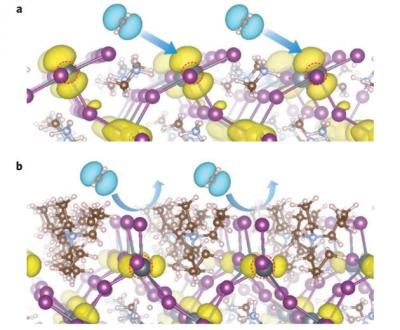Chinese and Australian researchers have designed a water-resistant perovskite solar cell that can operate in a humid environment and maintain its efficiency over three weeks.

Such cells typically have a methylammonium lead iodide (CH3NH3PbI3) structure, which previous groups have attempted to modify or change completely in order to improve its stability. The researchers in this study, however, have adopted a different approach. Recognizing that water molecules are absorbed by lead in the perovskite's surface layer, the team decided to replace a portion of the surface cations with hydrophobic tetra-alkyl ammonium ions. They invented a dipping technique capable of functionalizing perovskite films in a simple and effective manner.
The group dipped a perovskite film into an alkyl ammonium iodide isopropanol solution for 20 seconds, allowing the cations to functionalize the surface. The film was then rinsed with an isopropanol solution and dried. This modified surface prevents moisture from penetrating the film and reacting with lead cations to form degradation products, such as PbI2, according to the researchers.
Stored in the dark for 21 days at 55% relative humidity, the modified perovskite is capable of retaining up to 90.4% of its original power conversion efficiency. The group claims the film can protect the cell at 90% relative humidity over 30 days before degrading.

